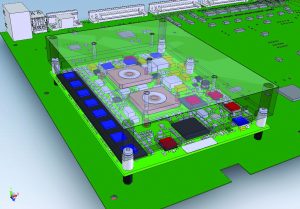COM Express Simplifies Custom System Development for OEM Applications

 Engineers are always looking for a better way to design OEM systems. They may consider a fully custom design that can meet all their application requirements but time and cost for the development can be a major hurdle. Using commercial off-the-shelf (COTS) products remedies those problems, but often requires compromising system functionality, size, product lifetime and even reliability. So what to do? At Sealevel, we believe the answer is an architecture that blends the best benefits of custom design and COTs: COM Express.
Engineers are always looking for a better way to design OEM systems. They may consider a fully custom design that can meet all their application requirements but time and cost for the development can be a major hurdle. Using commercial off-the-shelf (COTS) products remedies those problems, but often requires compromising system functionality, size, product lifetime and even reliability. So what to do? At Sealevel, we believe the answer is an architecture that blends the best benefits of custom design and COTs: COM Express.
A COM Express system combines an off-the-shelf Computer on Module (COM) containing the functionality common to most systems (processor, memory, graphics, USB, Ethernet, SATA) with a custom carrier board that includes application specific I/O and interface connectors. This combination provides many benefits of a fully custom design while simplifying the cost and time for the design process since the COM Express module provides the highest speed, most difficult to design functions.
Advantages of COM Express
Fast Time to Market
Since the most complex, high-speed portion of the design is provided by the COM Express module, design time is reduced dramatically compared to a ground-up design. With over 25 years of history making hundreds of I/O products, Sealevel can often combine existing circuit designs for serial, digital and analog I/O to exactly match the user’s requirements with minimal design time and risk.
Scalable Processing
Since the processor and core computer functions are contained on a separate module, a single carrier board design can work with multiple COM Express modules ranging from low power, low cost Intel ATOM designs to the 3rd generation i7 processor. This scalability can allow the end product to be targeted at multiple applications.
Application Specific I/O
Finding I/O boards to add required I/O to an off-the-shelf platform can be difficult and can lead to extra cost and space to achieve the necessary functionality. A custom carrier board is tailored to meet exactly the required system functionality outside of the core features supplied by the COM Express module.
Flexible Mechanical Configuration
The carrier board can be designed to the mechanical footprint that best fits the application. This flexibility enables an enclosure that is optimized for size and heat dissipation.
Vibration Resistance
For rugged systems, cable connections to bring internal functions to the chassis can be a major point of failure. A custom carrier board can be designed to the exact mechanical dimensions to allow I/O connectors to be soldered directly to the PCB in such a way to allow external access, improving system ruggedness and MTBF. Additionally, the COM Express module is held firmly in place with mounting screws to eliminate problems with vibration.
Long-term Availability
Perhaps the most common reason for a system redesign is to upgrade the processing power or to replace a part of the system that has become obsolete. As new computing and chipset technology are released, a new generation COM Express module will be available to allow an easy upgrade path. The application specific circuits on the carrier board typically use ICs with a very long lifecycle and generally will not require redesign.
Recent research studies show COM Express gaining market share over the past several years, and this growth is projected to continue. This momentum will generate more vendor investment and thus an even wider range of COM Express modules from which to choose. Careful attention to the carrier board design, either with in-house resources or by choosing a qualified, experience carrier board design partner will ensure that OEMs receive the maximum benefit from COM Express.
Categories:
